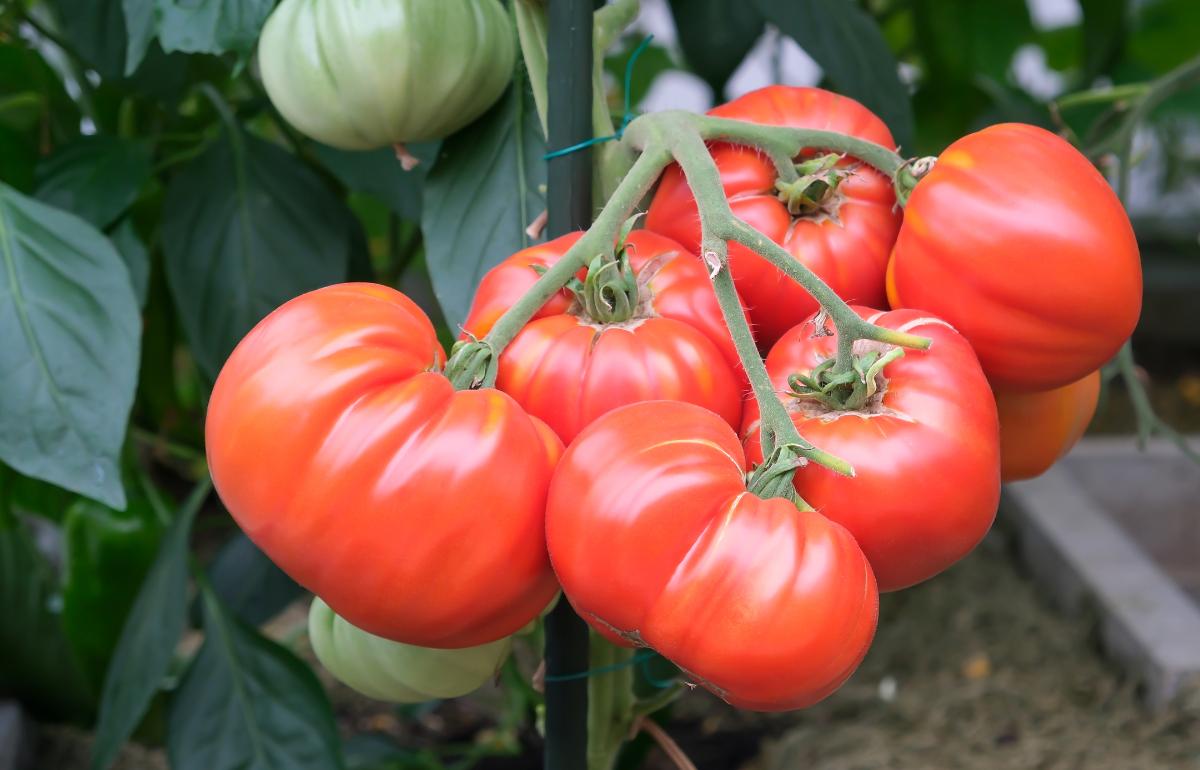Tomatoes are the hidden star of almost every dinner table. If there’s a salad, it probably has tomatoes. Pizza? It’s surely covered in tomato sauce, right?
There’s also Tomato soup, BLT sandwiches, and bruschettas, just to name just a few delicious options.
That’s why it makes perfect sense as a gardener to look for tips for a better tomato yield! Today, we have four quick tips to turn your little tomato plants into prolific producers!
1 – Maximize Sunlight Exposure
While it’s known that almost all plants need sunlight to grow, tomatoes love their sunshine even more!
A good eight hours a day can help your plant grow healthy and produce the best tomatoes.
Without adequate sunlight, your tomato plant won’t have enough energy to produce healthy crops. They can become leggy, produce fewer fruits, and be more susceptible to diseases.
If you’re aiming for a bountiful harvest, ensure your tomato plant is in a sunny spot! That means avoiding placing the plant near taller plants or structures that can cast shadows and hog the sunlight.
Important note: if you live in a particularly hot climate, consider providing some afternoon shade to prevent the plant from getting too much heat.
2 – Prepare the Soil
The foundation of a healthy, productive tomato plant starts with the soil! Adding organic matter into the soil, like compost or well-rotted manure, is one of the best ways to improve fertility.
Organic matter enriches the soil with essential nutrients that tomatoes need for healthy growth, such as nitrogen, phosphorus, and potassium.
It also improves soil texture, enhancing its ability to retain moisture while ensuring good drainage—both critical factors for tomato plants!
Another tip is to test your soil’s pH levels to understand its needs. Tomatoes prefer slightly acidic soil, with a pH between 6.2 and 6.8.
If your soil is too acidic or alkaline, it can affect your plant’s ability to absorb nutrients, leading to poor growth and reduced yield.
3 – Use Deep Planting and Proper Spacing
Leaving proper space between your tomato plants is crucial as it can prevent overcrowding, which often leads to reduced air circulation and an increased risk of diseases.
When planting tomatoes, space them about 16 to 22 inches apart, depending on the variety.
This distance allows each plant enough room to grow without competing for resources like sunlight, water, and nutrients.
Moreover, tomatoes benefit from a planting technique known as deep planting. When you plant tomatoes deeply, buying part of the stem under the soil, the stem will develop additional roots along its buried portion.
These extra roots strengthen the plant’s overall root system, providing better support and allowing the plant to absorb water and nutrients from the soil.
4 – Follow Smart Waiting Tactics
Tomato plants require regular, deep watering to develop strong roots and produce healthy fruits.
Inconsistent watering—allowing the soil to dry out completely between waterings or overwatering—can lead to water dress, which is one of the primary reasons behind blossom end rot.
To avoid use, ensure your tomato plant receives a steady supply of water throughout the growing season.
Also, when watering tomato plants, it’s vital to focus on water at the base rather than from above.
Watering at the base guarantees the roots get the moisture they need while keeping the foliage dry.
Consider using a drip irrigation system or soaker hoses for consistent and efficient watering.
These methods help sprinkle the water directly into the soil at the base of the plant, reducing water waste and keeping the foliage dry.
Final Thoughts
If you follow the four previous tips, you’re almost guaranteed to have a better tomato yield.
Start by deep-planting your crop where the sun is always shining, offering a little bit of shade during the noon hours.
Next, maintain the crop by enriching the soil with organic matter and fertilizer that can help the plant grow stronger and healthier.
Finally, keep the plant watered consistently. Don’t let the soil dry out completely before your next watering session, as this can cause your plant to go through water stress.

Growing up with a mom who filled her home (inside and out) with all sorts of plants, Lisa got her start in gardening at a young age. Living now on her own with a home and yard full of plants (including an indoor greenhouse), she shares all the gardening tips she’s gained over the years.

